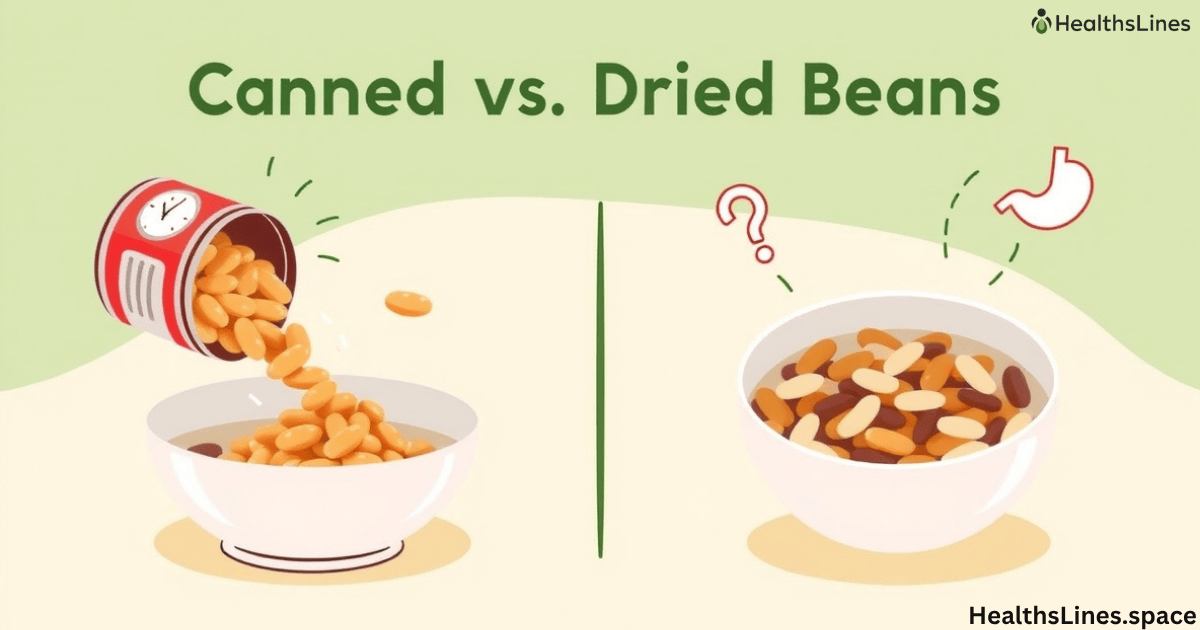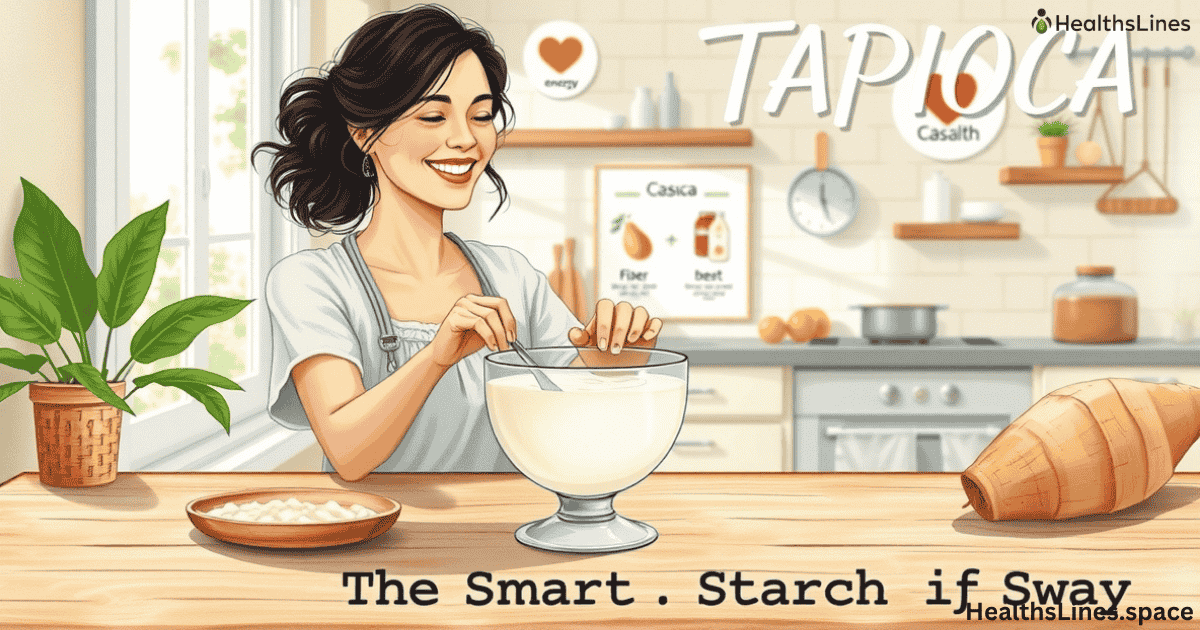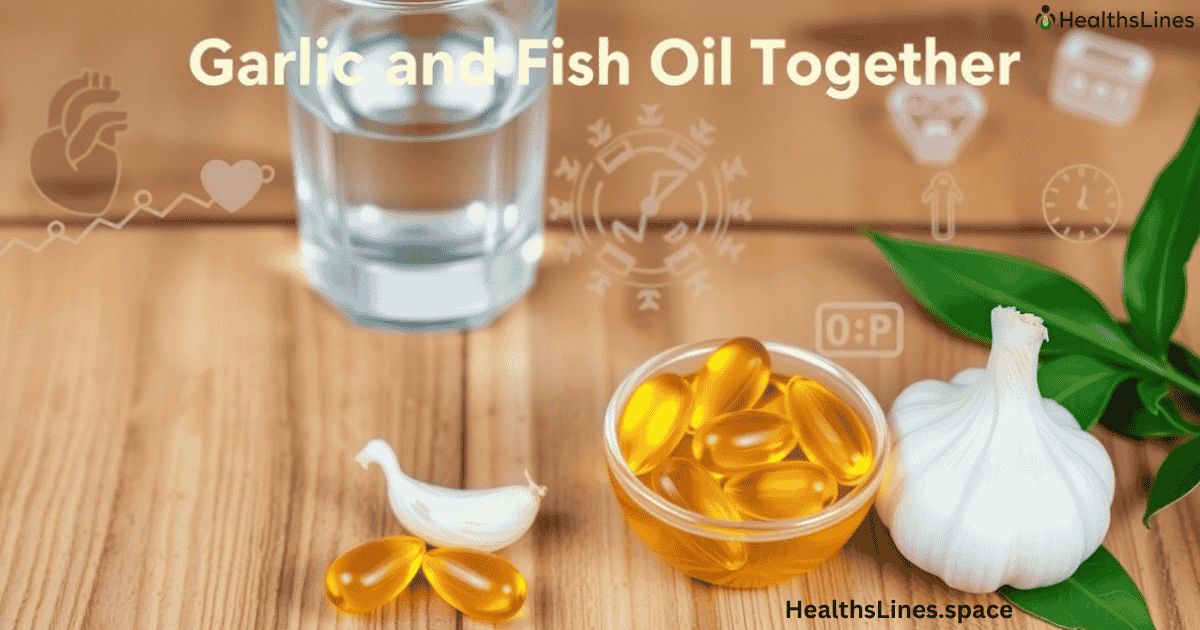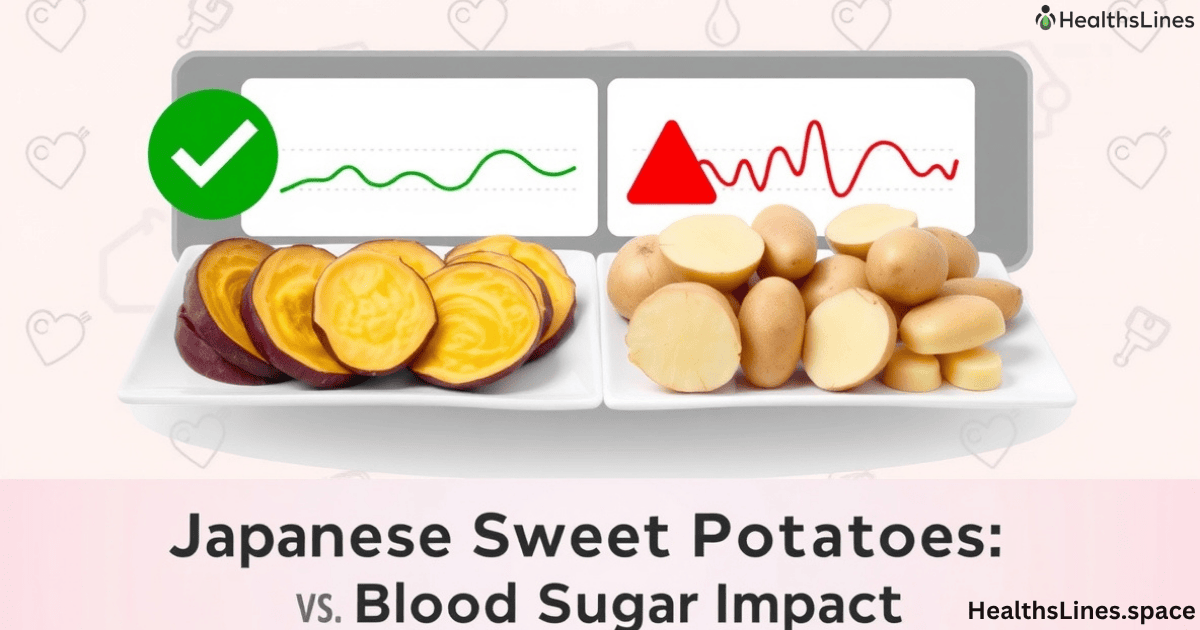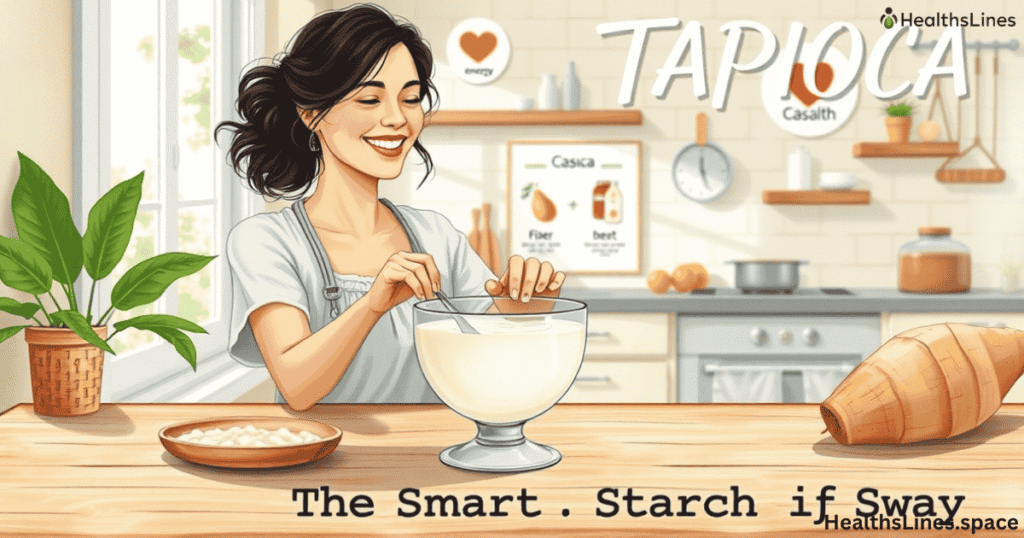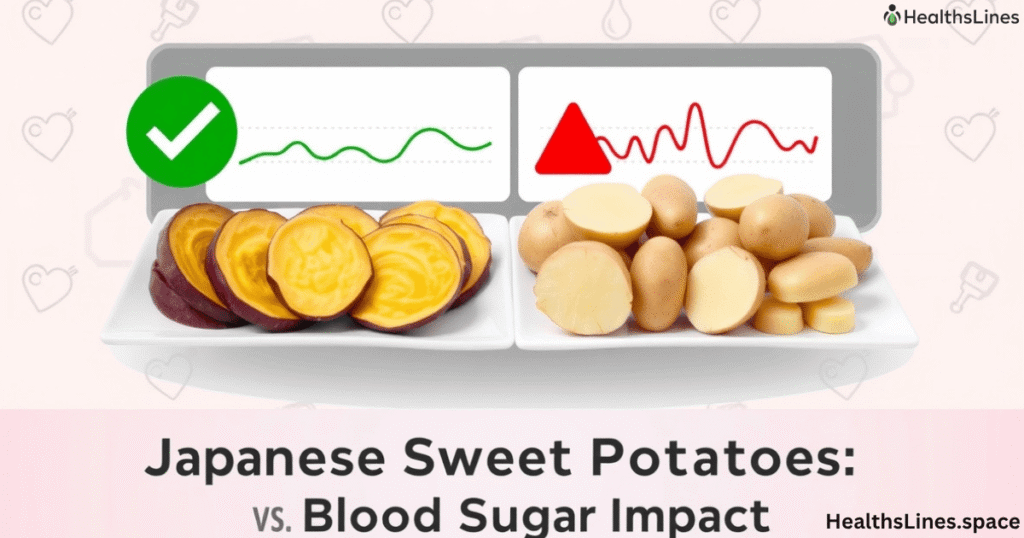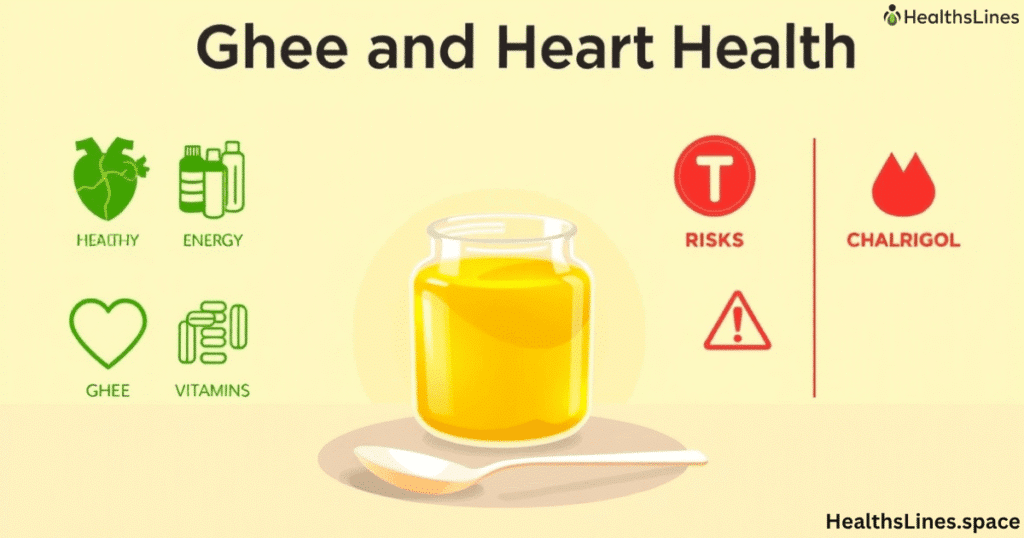When people talk about fiber vs protein, it can sound like a competition. Should you eat more protein for strong muscles? Or more fiber for a healthy stomach? The truth is both are important. They each help your body in different ways.
Protein vs fiber for health is not about picking one winner. It’s about finding the right balance for your goals. If you want weight loss, both nutrients can help. If you want muscle gain, protein might take the lead — but fiber will still be important for digestion and overall health.
Eating enough of both is the best choice. Your body needs protein to repair and grow. It needs fiber to keep your stomach and intestines working well. Together, they give you energy, protect your heart, and help you stay at a healthy weight.
What Protein Does for Your Body
Protein is made up of amino acids, which are like building blocks. Your body uses these blocks to build muscles, repair tissues, make hormones, and keep your immune system strong. Without enough protein, your body can’t work at its best.
The protein intake recommendations for most adults are about 0.8 grams for each kilogram of body weight every day. That means an adult who weighs 70 kilograms needs about 56 grams of protein daily. People who exercise a lot, play sports, or want muscle gain may need 1.2 to 1.7 grams per kilogram.
Protein can also help with weight management. Eating high-protein foods makes you feel full longer, so you’re less likely to snack on unhealthy foods. Protein also burns more calories during digestion compared to fats or carbs. This is called the thermic effect of food.
But too much protein can cause problems. A high protein diet with lots of processed meats or supplements may put stress on your kidneys and leave less room for other nutrients. That’s why balance is key.
Best Sources of Protein
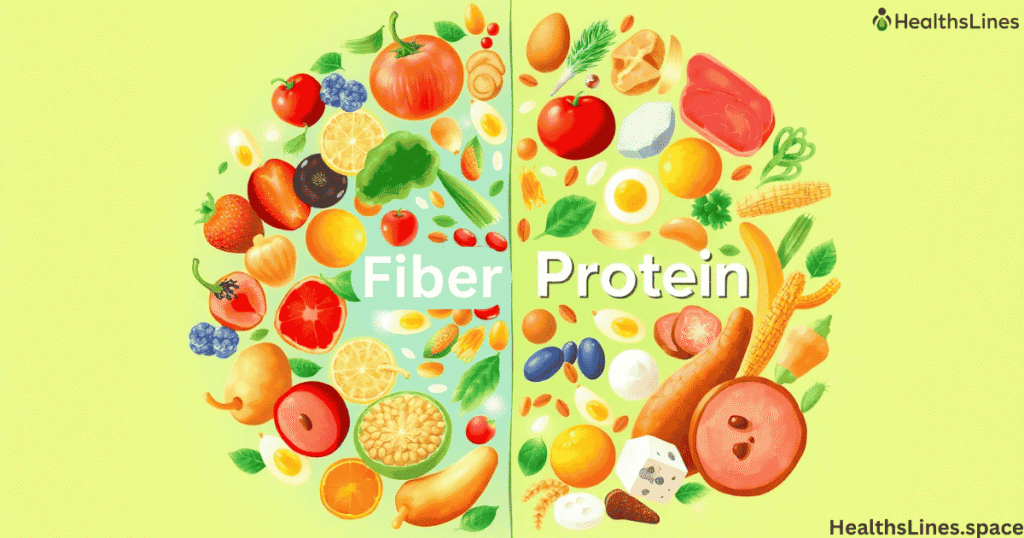
The best sources of protein and fiber depend on what you like to eat. Lean protein sources like chicken, turkey, fish, eggs, and low-fat dairy give you protein without too much fat.
Plant-based protein is another healthy choice. Beans, lentils, tofu, quinoa, and nuts are all great. Some also give you fiber, which is a double benefit. Complete protein foods, like eggs, dairy, and soy, have all the amino acids your body needs.
Eating protein at every meal works better than getting it all at once. For example, you might have eggs with whole grain toast for breakfast, a turkey sandwich with vegetables for lunch, and grilled salmon with quinoa and broccoli for dinner.
What Fiber Does for Your Body
Fiber is a type of carbohydrate your body can’t digest. It comes in two main types — soluble fiber and insoluble fiber.
Soluble fiber dissolves in water. It slows digestion, helps control blood sugar, and lowers cholesterol. Insoluble fiber adds bulk to your stool and keeps you regular. Both types are important for fiber for digestion and gut health fiber.
The fiber intake recommendations say adult women should get about 25 grams per day, and men should get about 38 grams per day. Sadly, many people get much less.
Fiber is great for fiber for heart health, fiber for cholesterol control, and fiber for weight loss. It also helps with fiber for blood sugar control, which is important for people who want steady energy during the day.
Best Sources of Fiber
Fiber is a vital part of a healthy diet. It helps your digestion, supports heart health, and can even aid in weight management. There are two main types of fiber—soluble fiber and insoluble fiber—and both are important. Soluble fiber dissolves in water and forms a gel-like substance in the stomach. It can help lower cholesterol and control blood sugar levels. Insoluble fiber adds bulk to stool and supports regular bowel movements. To get the full fiber benefits, you should eat a variety of foods rich in both types.
Some of the best sources of fiber come from whole, plant-based foods. Fruits like apples, pears, berries, and oranges are rich in soluble fiber. Vegetables such as carrots, broccoli, and Brussels sprouts provide a mix of both soluble and insoluble fiber. Whole grains like oats, quinoa, barley, and brown rice are excellent for daily fiber intake. Legumes, including lentils, chickpeas, and black beans, are also loaded with fiber while giving you extra plant-based protein. Nuts and seeds, such as chia seeds, flaxseeds, and almonds, offer an easy way to boost fiber in snacks or meals.
A high-fiber diet should aim for about 25–38 grams of fiber daily, depending on age and gender. By mixing different fiber-rich foods in your daily meals, you can improve digestion, manage weight, and support your long-term health.
Fiber vs Protein for Weight Loss
If your goal is to lose weight, you may wonder about fiber vs protein for weight loss. The answer is simple — use both.
Protein helps you lose fat while keeping your muscles. This is important because muscles burn more calories than fat, even when you rest. Fiber helps you eat fewer calories by making you feel full longer.
Many people find success with protein and fiber snacks for weight loss. Examples include Greek yogurt with berries, hummus with carrot sticks, or cottage cheese with pineapple. These snacks keep you full and give your body the nutrients it needs.
Fiber vs Protein for Muscle Gain
When it comes to building muscle, protein often gets all the attention — and for good reason. Protein provides the essential amino acids your body needs to repair and grow muscle tissue after exercise. Without enough protein, your muscles simply can’t recover and get stronger. Foods like chicken, fish, eggs, Greek yogurt, tofu, and beans are excellent protein sources that support muscle repair. For most people aiming to gain muscle, a daily intake of 1.6–2.2 grams of protein per kilogram of body weight is often recommended.
But fiber also plays an important, though indirect, role in muscle gain. While fiber doesn’t build muscle directly, it helps keep your digestive system healthy, supports nutrient absorption, and maintains steady energy levels during workouts. High-fiber foods like whole grains, vegetables, fruits, and legumes prevent blood sugar spikes and crashes, giving your body a more stable fuel supply. They also help you feel full, which can be helpful for controlling body fat while building lean muscle mass.
In short, protein is the direct building block for muscle, while fiber supports the environment where muscle growth happens. The best approach for muscle gain is to combine both: focus on getting enough protein for recovery and growth, and include fiber-rich foods to keep digestion, energy, and overall health in balance.
Daily Fiber and Protein Needs Table
| Goal | Protein Intake | Fiber Intake |
| General Health | 0.8 g/kg body weight daily | 25 g women / 38 g men daily |
| Muscle Gain | 1.2–1.7 g/kg body weight daily | 25–30 g daily |
| Weight Loss | 1–1.3 g/kg body weight daily | Higher fiber for hunger control |
Meal Planning to Get Both Nutrients
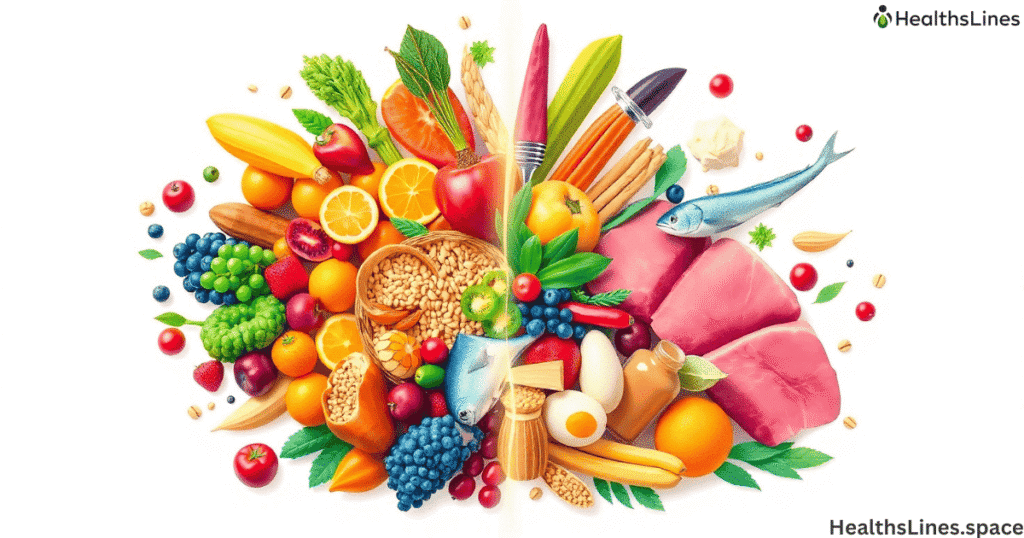
Meeting your daily fiber and protein needs is easier with healthy meal planning. You can make easy high-protein high-fiber meals by combining foods from both groups.
Breakfast could be oatmeal with almond butter and banana. Lunch might be a lentil and vegetable soup with whole grain bread. Dinner could be grilled chicken with quinoa and roasted vegetables. Snacks might be hard-boiled eggs, mixed nuts, or apple slices with peanut butter.
Eating a mix of macronutrients in each meal helps your diet for energy stay balanced all day. Following a whole foods diet instead of processed food will give you more vitamins and minerals too.
Case Study: More Energy with Balanced Meals
Let’s look at an example. Sarah, a 35-year-old teacher, often felt tired by the afternoon. She used to skip breakfast, eat a fast-food burger for lunch, and snack on cookies at night.
She decided to focus on fiber and protein benefits. For breakfast, she started eating Greek yogurt with flaxseeds and raspberries. Lunch became a chickpea salad with quinoa. Dinner was baked salmon with sweet potatoes and steamed broccoli.
After just a month, Sarah noticed she had more energy, better digestion, and less hunger between meals. This shows how best sources of protein and fiber can improve health in everyday life.
Conclusion
When thinking about protein vs fiber for health, you don’t have to pick just one. Protein builds muscles, repairs tissues, and keeps your metabolism strong. Fiber supports digestion, heart health, and helps control hunger.
The best approach is a balanced diet with enough of both. Aim for how much fiber I should eat daily and how much protein I should eat daily recommendations, and choose a mix of lean protein sources, plant-based protein, and high-fiber foods.
If you want steady energy, a healthy weight, and strong muscles, try to include both nutrients in every meal. From high fiber and protein breakfast ideas to protein and fiber snacks for weight loss, balance is the real secret to long-term health.

